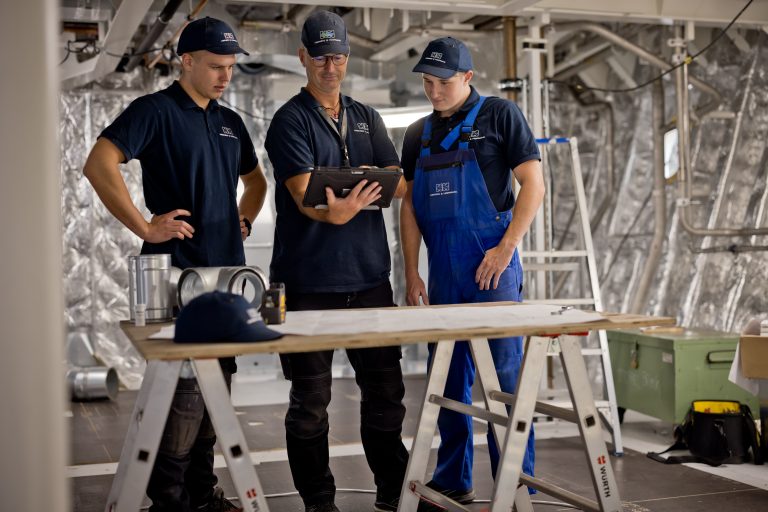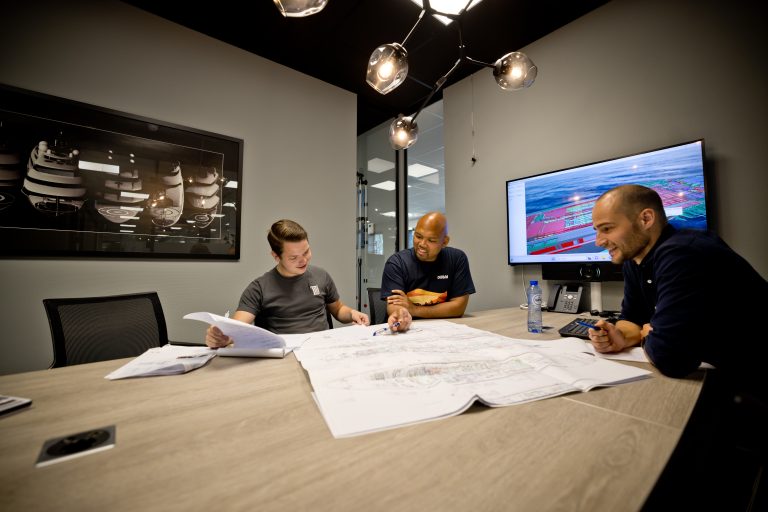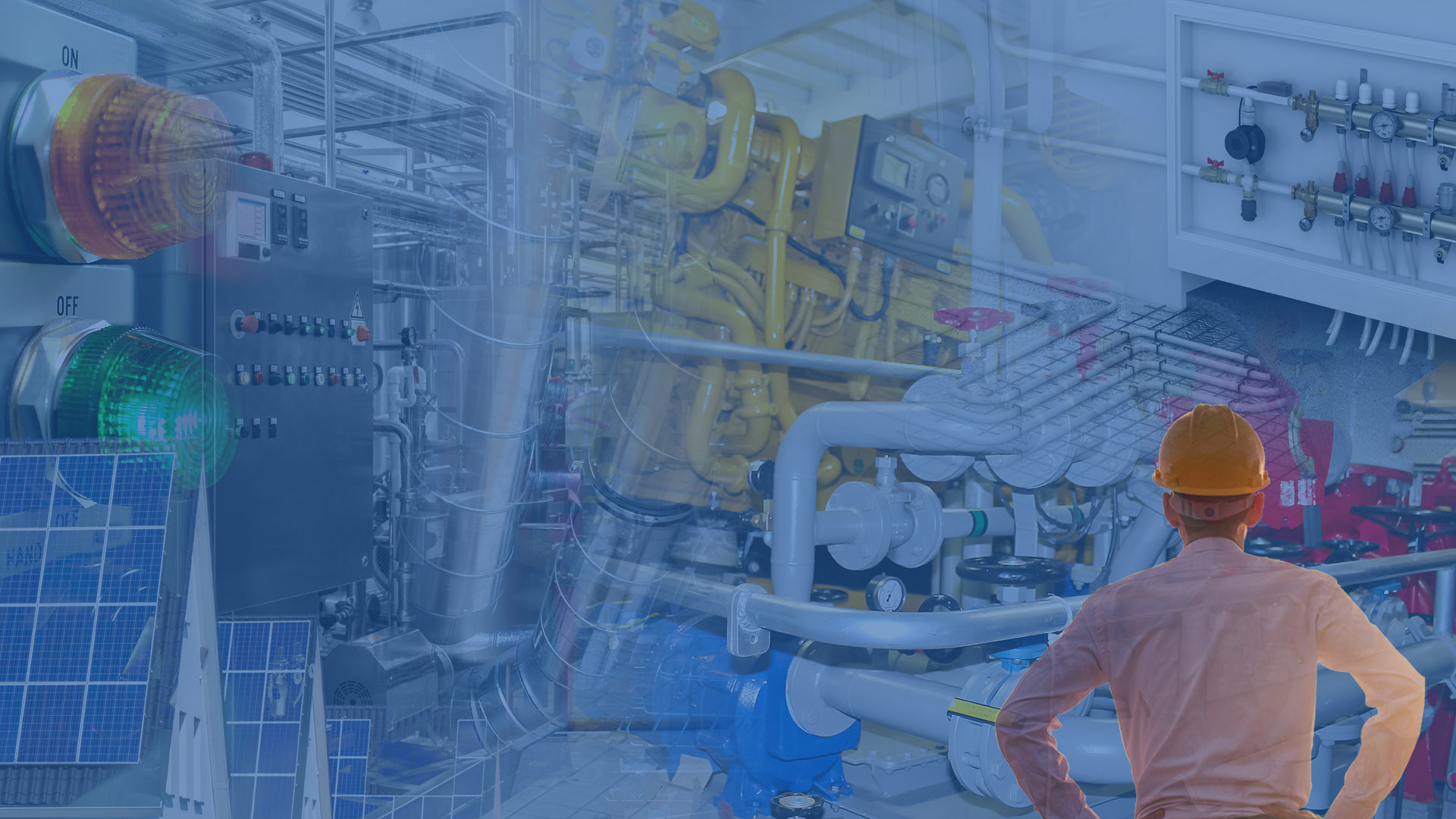Heinen & Hopman
About data-driven chain collaboration

Heinen & Hopman was founded in 1965 by Melis Heinen and Cees Hopman, father of current CEO Constantijn Hopman. The Board consists of Constantijn, his brothers Joep and Bert and CFO André Beukers.
The family business produces high-end systems in heating, ventilation, air conditioning and cooling and has already equipped more than 15,000 ships with them. Heinen & Hopman provides standard and customised solutions for commercial vessels, super yachts and offshore platforms.
Constantijn Hopman: “The company originally did very little in the maritime market. But in the end, that segment became far bigger than our work ashore. The maritime branch has grown rapidly and these days, we are represented worldwide by more than 2,200 employees at 54 locations. Everywhere there’s a maritime hub, we have a physical presence.”
- Participant type: Installer
- Data downloader since 2010
”If we have to choose between two suppliers and one has everything organised and provides their data exactly in compliance with the OMDS fields in 2BA, and the other doesn’t, we go with the one that does have everything complete“
Constantijn Hopman, director Heinen & Hopman
Heinen & Hopman on data-driven chain collaboration
Since 2010, Heinen & Hopman have made intensive use of the 2BA product data pool to support the cost price calculations and the purchasing process. The Board also sees its increasing added value now that more and more shipbuilders and maritime suppliers are taking part in that data pool.
And the current developments around the UOB (uniform objects library) for the 3D modeller are being closely monitored, partly because of the seamless integration with the 2BA product database.
Which restrictions does Heinen & Hopman see in the maritime supply chain?
Constantijn: “We’re actually a world-class committed fitter/installer. A copper pipe is a copper pipe – that’s not particularly exciting. However, the more specific materials that we buy in for our maritime projects is only 10% of our suppliers’ turnover. So we sometimes need all our persuasive powers to get suppliers to provide the 2BA data pool with all the product and article data relevant for us from now on.”
Reinier van Schaik (ICT Manager): “One thing we come across now and then in practice is that a supplier doesn’t always comply with sector standard when it comes to units. That’s a thorny issue for us, because we find it hugely important that the supplier provides 2BA with the right price, order unit and contents of the package. Everything is clearly described in what’s known as the ‘triangle of units’ and obviously, we want to maintain that standard too.”
How important is a data-driven purchasing process to Heinen & Hopman?
Reinier: “We want to process article data as automatically centralised as possible. That works well for a number of suppliers. A system runs at night, processing all article data in our ERP. That all had to be done manually before. Pretty soon, you were spending a whole day adjusting article data for two suppliers. Now, we can process the article files of 15 suppliers in a day. It can be simply checked through a report of the mutations.
Naturally, the quality of the article information provided by the supplier plays a major role. Thanks to the standardisation in the areas of product and article data, there have been improvements in efficiency and speed.”


What is OMDS?
In consultation with the OMDS project group, the product information within the 2BA database has now been expanded for the maritime manufacturing industry with a number of industry-specific product classes and features. 2BA also offers important efficiency benefits for the maritime industry Read more
What is the advantage for your suppliers that take part in 2BA and OMDS?
Constantijn: “If we have to choose between two suppliers and one has everything organised and provides their data exactly in compliance with the OMDS fields in 2BA, and the other doesn’t, we go with the one that does have everything complete. That’s a very easy choice. It saves us an enormous amount of time in the processing of the purchase orders. Not only that; if the supplier makes sure their data is right, the invoice can ultimately be paid faster too which, of course, is a worthwhile advantage for the supplier.”
What does this means for suppliers not, or not yet affiliated with 2BA?
Constantijn: “They can still supply, since we need the articles for our systems. But suppliers affiliated with 2BA definitely get priority.”
Is it important to your company that an initiative like the One Maritime Data Standard has broad support in the sector?
“Definitely. If you want to have maritime chains working more efficiently, you will have to join forces. It’s not even just about data such as height, width etc., it’s also about logistics. We have to make sure we’re not all doing the same tasks in the chain. A lot could be done significantly more efficiently. There’s so much we can learn from each other. And it might be a cliché, but you really can achieve more together!”, says Reinier.
Lastly, we wonder how data-driven chain collaboration can also contribute to a better environment?
Constantijn: “You hear more and more queries about environment tax from the clients. And the end user will also be facing this. The emphasis is mainly on CO2 footprints, but the demand for supplementary product data in the fields of sustainability and circularity will also definitely increase. It affects the whole chain and sometimes, unfortunately, we have to hypothesise. So there’s still also plenty to be gained from sharing standardised environmental data in the chain.”
Heinen & Hopman has published a Green Manifesto that not only describes its vision on sustainability and the importance of that for the company, but also has the aim of increasing awareness in the sector of the importance of ‘green’.





